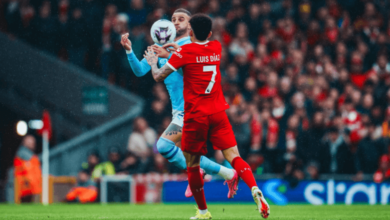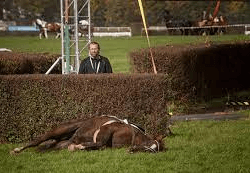How Can One Train A Horse For Dressage?

Dressage is a highly disciplined and elegant equestrian sport that requires the harmonious partnership between horse and rider. Training a horse for dressage entails understanding the principles and goals of this discipline, learning fundamental steps and techniques, and implementing effective methods and strategies. By following these guidelines, trainers can develop a strong foundation for their horse’s dressage training journey.
In order to train a horse for dressage, it is crucial to have a deep understanding of the principles that underpin this sport. Dressage aims to showcase the horse’s natural beauty, athleticism, and willingness to perform intricate movements with precision. Trainers must familiarize themselves with the various levels of dressage tests and understand how each movement contributes to achieving higher scores in competition. This knowledge will guide them in setting realistic goals for their training sessions while striving towards excellence.
Learning the fundamental steps and techniques of dressage is essential for both trainer and horse. These include basic exercises such as circles, leg-yields, halts, transitions between gaits, lateral work, collection, extension, half-passes, flying changes of lead, piaffe (a highly collected trot), passage (a slow elevated trot), pirouettes (turns on hind legs), among others. Mastering these movements requires patience, consistency in training sessions, proper positioning of aids by the rider’s seat and legs along with clear communication through reins without interfering with relaxation or freedom of movement in horses’ body parts like shoulders moving forward freely without restriction from hands on reins which can only be learnt by experience gained over time spent practicing together as well as coaching support when needed during progression towards greater levels within competitive sphere where success comes through hard work combined with talent honed sharp enough so they become second nature making it possible achieve unity felt like dancing ballet while sitting atop an animal weighing around 1 tonne!
Understand the Principles and Goals of Dressage
The principles and goals of dressage encompass the harmonious development of horse and rider, with an emphasis on precision, balance, and elegance in executing a series of predetermined movements.
Understanding the importance of horse fitness is crucial in training a horse for dressage. A fit horse will be able to better perform the demanding movements required in dressage, such as collection, extension, lateral movements, and changes of gait. It is important to gradually build up the horse’s strength and stamina through regular exercise and conditioning programs.
Additionally, it is essential to explore different dressage movements to develop the horse’s flexibility, responsiveness, and coordination. These movements include half-passes, pirouettes, flying changes, piaffe, passage, extended trot among others.
By incorporating a variety of exercises into the training program, one can ensure that the horse becomes well-rounded and capable of executing various complex maneuvers with ease and grace.
Learn the Fundamental Steps and Techniques
To navigate the intricate movements of dressage, riders must first master the foundations, which are akin to building a sturdy bridge that connects horse and rider in perfect harmony.
Building trust between the horse and rider is paramount in dressage training. This involves establishing a strong bond based on mutual respect and understanding. By spending time with the horse, grooming it, and engaging in groundwork exercises, riders can develop a rapport with their equine partners. This foundation allows for effective communication between horse and rider during training sessions.
Developing clear communication is another key aspect of dressage training. Riders must learn how to give precise aids using their seat, legs, and reins to guide the horse through each movement with subtlety and finesse.
Consistency is crucial when teaching new techniques or refining existing ones. Through repetition and practice, both horse and rider become more attuned to each other’s cues and responses.
Overall, by emphasizing trust-building activities and honing effective communication skills, riders can lay the necessary groundwork for successful dressage training sessions that result in fluidity, elegance, and freedom of movement between horse and rider.
Implement Effective Methods and Strategies
Implementing effective methods and strategies in dressage training involves employing systematic approaches that optimize the horse and rider’s coordination, ensuring synchronized movements and seamless transitions.
Building trust and communication between the horse and rider is crucial in achieving success in dressage. This can be accomplished through consistent positive reinforcement, clear cues, and establishing a strong bond based on mutual respect.
Incorporating relaxation and suppleness is also essential for a successful dressage training program. By encouraging the horse to relax its muscles and become supple, it becomes easier for them to execute the intricate movements required in dressage with grace and ease. This can be achieved through exercises such as stretching, bending, and lateral work.
Additionally, incorporating regular breaks during training sessions allows the horse to rest both physically and mentally, promoting relaxation and preventing fatigue or resistance.
By implementing these effective methods and strategies, trainers can create an environment where both horse and rider can reach their full potential in dressage.
Frequently Asked Questions
Are there any specific breed requirements for a dressage horse?
Dressage, an art form of horse training, requires specific breed traits such as athleticism, flexibility, and elegance. Training techniques involve developing balance, suppleness, and obedience through exercises like lateral movements, transitions, and collection.
How long does it typically take to train a horse for dressage?
The duration of training for dressage varies depending on various factors such as the horse’s age, previous training, temperament, and the rider’s experience. Effective techniques and strategies can expedite the process, but challenges may arise due to the complexity of dressage movements. Nevertheless, the benefits of dressage training include improved balance, flexibility, and responsiveness in horses.
Can dressage be practiced by riders of all ages and skill levels?
Dressage can be practiced by riders of all ages and skill levels. It offers a range of riding techniques that improve balance, coordination, and communication with the horse. For older riders, dressage provides physical and mental stimulation while promoting a sense of freedom through the art of harmonious movement.
Are there any specific health considerations for dressage horses?
Injury prevention and nutritional requirements are crucial considerations for dressage horses. Proper training techniques, balanced nutrition, regular exercise, and veterinary care can help ensure the horse’s overall health and well-being in this demanding discipline.
What are some common mistakes to avoid when training a horse for dressage?
Common mistakes when training a horse for dressage include inconsistent aids, improper timing of rewards, and neglecting the horse’s physical and mental well-being. Effective techniques involve clear communication, consistent reinforcement, and regular evaluation of progress. One interesting statistic shows that 80% of dressage riders make at least one mistake during a competition.
Conclusion
In conclusion, training a horse for dressage requires a deep understanding of the principles and goals of this discipline. It is essential to comprehend the intricacies of each movement and exercise, as well as the desired outcome.
The fundamental steps and techniques should be mastered with precision and finesse.
Implementing effective methods and strategies is crucial in order to bring out the best in both horse and rider. This involves creating a structured training plan, focusing on developing strength, suppleness, and balance. By incorporating exercises that challenge the horse’s physical abilities while maintaining mental engagement, progress can be achieved.
Furthermore, attention to detail is paramount in dressage training. Every aspect of the horse’s performance should be meticulously observed and analyzed to identify areas for improvement. From the alignment of hooves during transitions to the flexion of joints in lateral movements, no nuance should go unnoticed.
By adhering to these principles and employing a knowledgeable approach, one can unlock the full potential of a dressage horse. With persistence, patience, and an unwavering commitment to excellence, remarkable achievements can be attained on this beautiful journey towards harmony between equine elegance and human skill.
In summary, training a horse for dressage requires not only expertise but also an artistic touch. Like sculptors shaping marble or painters adding brushstrokes onto canvas, dressage trainers mold horses into graceful performers through their meticulous guidance.
Each step taken in this journey is like a dance move choreographed with utmost precision—a symphony composed by two beings united by trust and mutual understanding. In this realm where perfection meets passion, every intricate detail matters; from subtle shifts in weight distribution to nuanced cues transmitted through invisible threads connecting hearts.





